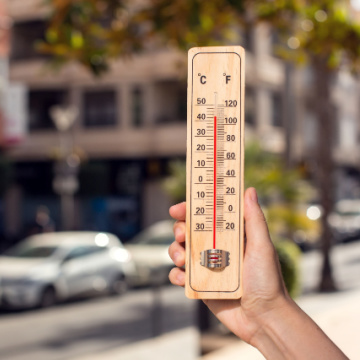Whether you’re transporting vaccines, pharmaceuticals, food items, or any other temperature-sensitive products, precise control of temperature is essential throughout the supply chain for product safety, preserving the integrity of the product, and regulatory compliance. The term cold chain refers to the process of maintaining the temperature, starting from the point of origin up to reaching the final destination. Cold chain temperature monitoring covers the entire supply chain, including production, transportation, storage, and distribution. This critical process utilises temperature monitoring devices, advanced analytics tools, and data collection systems for maintaining the desired temperature conditions at every phase.
Use of Temperature Monitors
Temperature monitors are used continuously in cold chains, starting from the production phase to its storage at the final destination. Process monitoring, shipping and transportation, and storage are the three stages of temperature monitoring.
- Process monitoring in cold chain management focuses on processes and variables that are related to temperature. In this stage, temperature is monitored during processing, manufacturing, and handling.
- During the transportation of perishable goods over long distances, accurate monitoring of temperature is of great importance. Many advanced temperature monitoring devices are equipped with alarms. They send prompt alerts in case of any temperature deviations, allowing logistics personnel to take prompt actions to prevent damage or degradation of the product in transit.
- Temperature monitoring is also a critical requirement during storage for maintaining product integrity. Throughout a product’s journey from cold rooms and warehouses to grocery store freezers and refrigerators, real-time data on temperature levels can be derived from temperature monitors.
Temperature Monitoring Sensors Used in Cold Chain Management
Several types of temperature sensors are used throughout the cold chain depending on the nature of the product and the supply chain stage.
- Conventional temperature monitors or data loggers are the most commonly used type. They are used during transportation and storage to record temperatures over an extended period at regular intervals. Often used as standalone devices, they can be attached to the monitored product or placed in the environment.
- Wireless temperature sensors utilise wireless connectivity to transmit real-time temperature data, and are often part of a centralised monitoring system.
- In probe thermometers, a temperature sensor probe remains attached to the display. Users can directly insert the probe into a product to obtain temperature readings with a high degree of accuracy. These devices are used extensively for spot-checking of temperature for specific items.
- Food temperature monitoring has been done using circular chart recorders or strip chart recorders for over 100 years. These sensors can accurately display and record temperature data as a visual representation of fluctuations over time on a rotating paper chart.
Importance of Cold Chain Temperature Monitoring
- Reduction of product waste is one of the most important benefits of temperature monitoring. Moreover, data and analytics provided by these monitoring systems can help improve the product’s quality control process.
- The transportation and storage of temperature-sensitive products are often governed by stringent regulations. Proper temperature monitoring is essential to comply with these regulations.
- Temperature monitoring optimises heating and cooling systems by adjusting temperature settings continuously as per actual needs. This minimises the consumption of energy and reduces carbon emissions.
If you are looking for temperature monitors to manage your cold chain, please take a look at the range of options available at ShockWatch.


